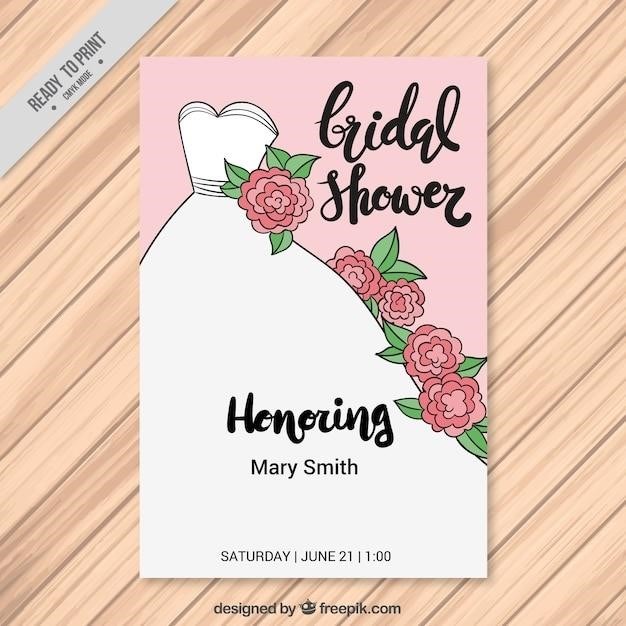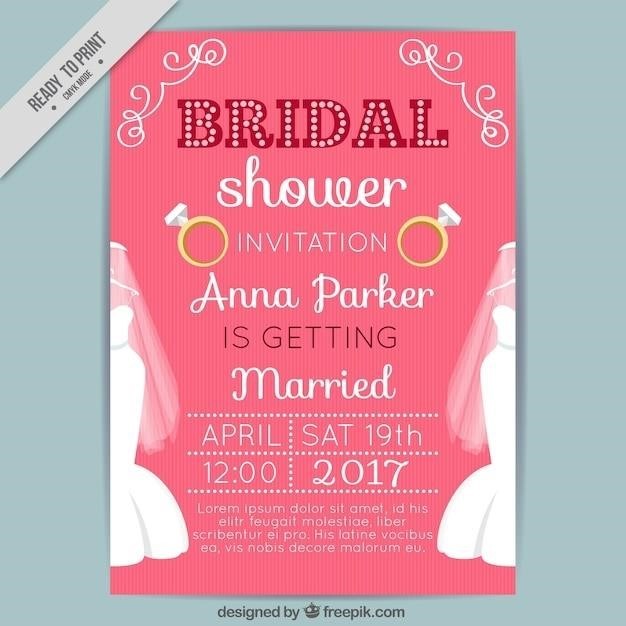The Fake Poor Bride⁚ Exploring the Phenomenon
This phenomenon explores wealthy individuals staging “poor” weddings, a deceptive practice highlighted in Xochitl Gonzalez’s Atlantic article. The article details extravagant weddings disguised as modest affairs, revealing the complexities of wealth and deception.
Understanding the “Fake Poor Bride” Concept
The “Fake Poor Bride” phenomenon refers to affluent individuals who intentionally downplay their wealth when planning their weddings. This often involves creating a facade of simplicity and frugality, contrasting sharply with the reality of substantial financial resources. Motivations behind this deception can be multifaceted, potentially including a desire for authenticity, a rejection of ostentatious displays of wealth, or a subtle attempt to manage social perceptions and expectations. The concept is explored in detail through various articles and books, often analyzing the societal pressures surrounding weddings and the complexities of class and identity. The practice highlights the tension between personal expression and societal norms within the context of extravagant wedding celebrations.
The Atlantic Article⁚ “The Fake Poor Bride”
Xochitl Gonzalez’s article, “The Fake Poor Bride,” published in The Atlantic, provides a compelling firsthand account of the phenomenon. Gonzalez, a wedding planner who has worked with ultra-wealthy clients, details numerous instances where brides and grooms deliberately concealed their affluence to create a seemingly humble wedding. The article delves into the motivations behind this deception, examining the pressures of societal expectations and the complexities of navigating wealth in a culture that often idealizes simplicity. It also explores the experiences of wedding vendors who are caught in the middle, sometimes unwittingly complicit in the deception. The article’s insightful narrative sheds light on the cultural implications and the ethical considerations surrounding this trend.
Real-Life Examples and Case Studies
Anecdotal evidence and news reports reveal numerous instances mirroring the “fake poor bride” phenomenon. One example describes a Long Island wedding with a seven-figure budget where the bride stressed over a few thousand dollars for custom invitation linings. Another mentions foil-wrapped sandwiches being thrown like footballs at an opulent celebration, highlighting the disconnect between the displayed frugality and the immense wealth involved. These examples, though not explicitly detailed case studies, illustrate the common thread of extravagant spending masked by a pretense of modest means. Further research could involve analyzing wedding blogs, social media posts, and wedding vendor accounts for similar instances to build a more comprehensive understanding of this trend. The lack of readily available, formal case studies underscores the secretive nature of this practice.

Exploring Related Literary Works
Novels such as “The Wrong Bride” and others explore themes of deception and fabricated identities within relationships, offering parallels to the “fake poor bride” concept. Many fictional works touch on wealth, class, and the masks people wear.
Novels Featuring “Fake” Relationships or Identities
The allure of the “fake poor bride” phenomenon resonates with literary themes of deception and fabricated identities in romantic relationships. Numerous novels explore scenarios where characters assume false personas to achieve specific goals, often involving wealth, social status, or escaping a difficult past. These narratives delve into the motivations behind such deception, exploring the psychological complexities and the potential consequences of maintaining a false identity. The inherent tension between truth and falsehood creates dramatic conflict, forcing characters to confront the moral dilemmas of their actions. Readers are invited to contemplate the cost of deception and the potential for redemption or ruin.
“The Wrong Bride” and Similar Novels
Catharina Maura’s “The Wrong Bride” exemplifies novels exploring mistaken identities and unexpected romantic entanglements. The narrative likely features a protagonist whose assumed identity unravels, leading to unforeseen consequences and romantic complications. This mirrors the “fake poor bride” theme, where outward appearances mask a different reality. Other similar novels might delve into scenarios of arranged marriages gone awry, or cases of mistaken identity causing romantic chaos. These stories often involve themes of societal expectations, family pressure, and the challenges of navigating complex relationships built on deception or misunderstanding. The resulting conflicts and character development often provide compelling narratives that resonate with readers.
Other Books Exploring Wealth and Deception
Numerous novels explore the intricate dance between wealth and deception, often weaving narratives around characters navigating the complexities of social class and hidden truths. These stories might feature protagonists concealing their true financial status, perhaps to gain acceptance or avoid judgment. Conversely, characters might exploit the vulnerabilities of the less affluent for personal gain, highlighting the moral ambiguities inherent in wealth disparities. The exploration of these themes often delves into the psychological impact of wealth and its influence on interpersonal relationships, offering insightful perspectives on human nature and societal structures. Such narratives can provide compelling examinations of power dynamics, social climbing, and the ethical dilemmas arising from vast economic inequalities.
Analyzing the Wedding Industry
The wedding industry’s immense cost and pressure, creating the “wedding industrial complex,” are analyzed. Ethical considerations and consumer awareness regarding deceptive practices are discussed.
The High Cost of Weddings and Associated Pressures
The exorbitant costs associated with modern weddings contribute significantly to the “fake poor bride” phenomenon. The average American wedding exceeding $30,000, places immense financial pressure on couples, often leading to creative—and sometimes deceptive—budgeting strategies; The desire for a lavish celebration, fueled by societal expectations and social media portrayals of perfect weddings, pushes couples towards exceeding their means. This pressure extends beyond the couple, impacting families who contribute financially, adding stress and potential conflict. The societal emphasis on a “dream wedding,” regardless of financial capability, creates a climate where staging a less expensive event as something more modest becomes appealing. This desire for a visually impressive event, irrespective of actual cost, is a key driver in the “fake poor bride” trend, highlighting the disconnect between financial reality and aspirational wedding imagery.
The “Wedding Industrial Complex” and its Influence
The “wedding industrial complex,” a term encompassing the vast network of businesses profiting from weddings, significantly influences the “fake poor bride” phenomenon. This complex, driven by profit maximization, perpetuates unrealistic expectations and fosters a culture of conspicuous consumption. Vendors, from venues and photographers to planners and dress designers, actively market luxury services, contributing to the pressure to create a visually stunning, expensive event. Marketing materials often depict lavish celebrations, reinforcing the idea that a successful wedding requires substantial expenditure. This contributes to the deception, as couples may attempt to emulate these visuals on a smaller budget, leading to the creation of a “fake poor” aesthetic. The complex’s influence creates a cycle where the pursuit of a seemingly modest wedding can still involve significant hidden costs and deceptive practices.
Ethical Considerations and Consumer Awareness
The “fake poor bride” trend raises significant ethical questions about honesty, transparency, and the commodification of weddings. Deceptive practices, such as pretending to have a modest budget while secretly spending vast sums, undermine trust between couples and their families, vendors, and guests. The pressure to maintain appearances, fueled by social media and societal expectations, can lead to financial strain and emotional distress. Increased consumer awareness is crucial. Couples should be encouraged to prioritize genuine celebrations over superficial displays of wealth. Vendors should be transparent about pricing and avoid perpetuating unrealistic expectations. Open communication and responsible spending are essential to creating ethical and fulfilling wedding experiences. This requires a shift in societal values, prioritizing authenticity over ostentatious displays.

Digital Access and Formats
The “Fake Poor Bride” article and related content are accessible in various digital formats, including PDF and ePub, ensuring broad readership and convenient access across multiple devices.
Availability of “The Fake Poor Bride” in PDF and Other Formats
Determining the official availability of Xochitl Gonzalez’s “The Fake Poor Bride” article in PDF format requires checking The Atlantic‘s website directly. While the article is readily available online, a dedicated PDF download might not be explicitly offered. Many websites offer downloads of books with similar themes, such as “The Wrong Bride” by Catharina Maura, available in EPUB, PDF, and MOBI formats. Readers should explore online book retailers and libraries for potential digital access. Remember to verify the source’s legitimacy before downloading any material. The widespread availability of e-book formats ensures broader access, catering to different reader preferences and device compatibilities. This accessibility allows for convenient reading and sharing of the piece.
eBook Compatibility and Features
While Xochitl Gonzalez’s “The Fake Poor Bride” article isn’t natively an ebook, its online availability means compatibility is dictated by the user’s device and browser. Many e-readers and tablets readily display web pages. Features like adjustable font sizes and text highlighting (depending on the browser and e-reader) will enhance readability. If downloaded from a third-party site as part of a book collection, compatibility depends on the file format (EPUB, MOBI, PDF). EPUB and MOBI formats are designed for optimal e-reader display, often including features such as bookmarks and note-taking capabilities. PDFs, while universally accessible, might lack these features, offering a more basic reading experience. The availability of interactive elements is dependent on the ebook version and platform;
Enhancing the Reading Experience
Optimizing your reading experience with “The Fake Poor Bride” depends heavily on the format. For online access, adjusting browser settings (font size, background color) significantly impacts readability. Many browsers allow highlighting and note-taking directly on the webpage; consider using these tools for engagement. If using a dedicated e-reader, explore its features—adjustable font sizes, brightness control, and dictionary functions—to personalize your reading. For PDF versions, annotations might be possible using your device’s tools or dedicated PDF annotation software. If the ebook version is available, explore any interactive elements it offers, such as embedded images or links to supplementary material that can deepen understanding. For a truly immersive experience, consider creating a distraction-free environment dedicated to focused reading.
Leave a Reply
You must be logged in to post a comment.